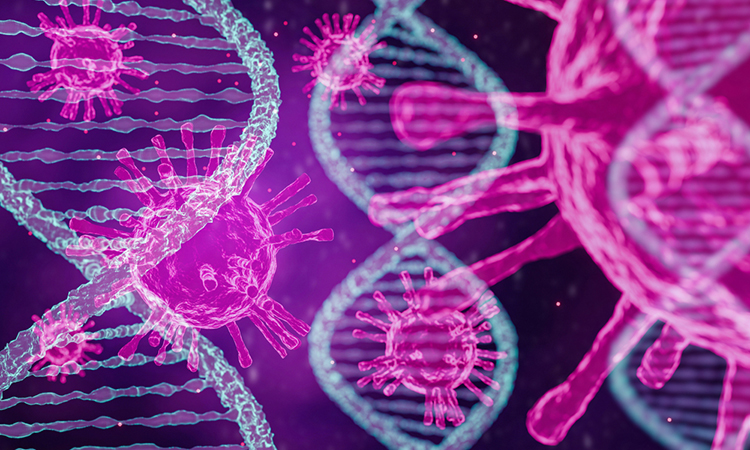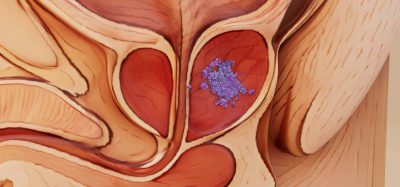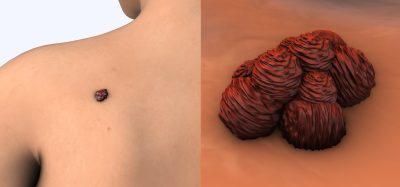Tool to track SARS-CoV-2 mutations could inform drug development
Posted: 11 September 2020 | Victoria Rees (Drug Target Review) | No comments yet
A new tool called COVID-3D that monitors SARS-CoV-2 genome mutations could aid drug and vaccine development, its creators say.


Researchers have developed a tool to monitor SARS-CoV-2 mutations that they say can make it difficult to develop COVID-19 vaccines and drugs.
According to the researchers from the University of Melbourne, Australia, ensuring treatments remain effective as the virus mutates is a huge challenge. However, their powerful new tool harnesses genomic and protein information about the virus and its mutations to aid drug and vaccine development.
Associate Professor David Ascher and his team at the Bio21 Molecular Science and Biotechnology Institute and the Baker Heart and Diabetes Institute developed the software tool and library, dubbed COVID-3D.
Automation now plays a central role in discovery. From self-driving laboratories to real-time bioprocessing
This report explores how data-driven systems improve reproducibility, speed decisions and make scale achievable across research and development.
Inside the report:
- Advance discovery through miniaturised, high-throughput and animal-free systems
- Integrate AI, robotics and analytics to speed decision-making
- Streamline cell therapy and bioprocess QC for scale and compliance
- And more!
This report unlocks perspectives that show how automation is changing the scale and quality of discovery. The result is faster insight, stronger data and better science – access your free copy today
COVID-3D contains information about all the protein structures that coincide with the SARS-CoV-2 genome, including every known genetic mutation and its resultant mutant protein structure.
“Although the SARS-CoV-2 virus is a relatively new pathogen, its ability to readily accumulate mutations across its genes was evident from the start of this pandemic,” Ascher said. “In the context of therapeutic drug design and discovery, these mutations and the patterns by which they accumulate within the virus’ protein structures, can affect the ability of vaccines and drugs to bind the virus or to create a specific immune response against it. Because of this, scientists must not only try to control the virus, but outsmart it by predicting how it will change over time.”
To develop COVID-3D, the team analysed the genome sequencing data of over 120,000 SARS-CoV-2 samples from infected people globally, including those that uniquely affect Australia, to identify mutations within each of the virus’ proteins. They tested and analysed the mutations’ effects on their protein structure using computer simulations.
This data was used to calculate all the biological effects of every possible mutation within the genome. To help researchers account for possible future mutations, the team analysed mutations in the related coronaviruses SARS-CoV and Bat RaTG13.
They found that SARS-CoV-2 is mutating slower than other viruses such as influenza, with about two new changes in its genome every month.
“It is only when you know how a mutation will affect the three-dimensional (3D) shape of a protein, that you can predict if it will compromise your drug’s ability to bind,” Ascher said. “As the global scientific and medical community gains better understanding of the biology behind the SARS-CoV-2 infection and disease, this will be a powerful resource to predict problems with mutations and to guide the development of more effective therapies. COVID-3D continues to be updated with new protein structures, mutations and analyses to keep ahead of mutations that cause problems and increasing our understanding of the SARS-CoV-2 mechanisms of disease.”
The researchers say that several international universities and research institutions already use COVID-3D in vaccine and treatment development.
The study is published in Nature Genetics.
Related topics
Drug Targets, Genetic Analysis, Genomics, Informatics, Research & Development, Targets, Technology
Related conditions
Covid-19
Related organisations
Baker Heart and Diabetes Institute, Bio21 Molecular Science and Biotechnology Institute, University of Melbourne
Related people
Associate Professor David Ascher








